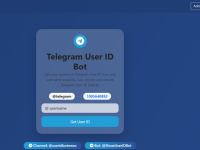The evolution of the Internet is a captivating journey highlighting the incredible advancements in technology and communication over the last several decades. To truly appreciate the digital world we inhabit today, it is essential to understand the key milestones that have shaped the Internet through the ages. In this article, we will explore a comprehensive Internet evolution timeline that showcases the significant events and innovations that have defined the Internet’s evolution.

The Birth of the Internet (1960s-1970s)
In the early 1960s, the global network concept began to take shape. Visionaries like J.C.R. Licklider at MIT proposed the idea of an “Intergalactic Network,” setting the groundwork for what would later evolve into the Internet. By 1969, the first successful message was sent over ARPANET, a precursor to the Internet. This marked a pivotal moment in the Internet evolution timeline, as it connected four universities and demonstrated the feasibility of data communication over long distances.
Transitioning into the 1970s, Vint Cerf and Bob Kahn’s development of the Transmission Control Protocol (TCP) and Internet Protocol (IP) established the foundational architecture of the modern Internet. This breakthrough allowed different networks to communicate with one another, setting the stage for an interconnected digital world and shaping the Internet’s evolution timeline.
The Rise of the World Wide Web (1980s-1990s)
Fast forward to the 1980s; the Internet expanded beyond academic and military use. The introduction of the Domain Name System (DNS) in 1984 made it easier for users to navigate the growing network. However, it was the invention of the World Wide Web by Tim Berners-Lee in 1991 that revolutionised how people interacted with the Internet. With the introduction of web browsers, users could now easily access information, further advancing the Internet evolution timeline.
Moreover, the mid-1990s saw an explosion of websites, paving the way for e-commerce and online communication platforms. Companies like Amazon and eBay emerged, fundamentally transforming the way consumers shopped and interacted online. As a result, the Internet became an integral part of everyday life for millions around the globe. This era marked a significant point in the evolution of the Internet timeline.
The Age of Social Media and Mobile Connectivity (2000s)
The 2000s ushered in a new era characterised by the rise of social media. Platforms like Facebook, Twitter, and YouTube not only changed how people communicated but also how they consumed information. This shift towards social interaction online was revolutionary and marked a significant change in user behaviour in the Internet evolution timeline.
In addition, the advent of smartphones and mobile Internet access transformed how individuals engaged with the web. With increasing access to high-speed Internet and the proliferation of mobile devices, users can now connect to the web anytime, anywhere. This shift led to a surge in mobile applications and a new focus on user experience, making the Internet more accessible. These advancements were key moments in the Internet evolution timeline.
The Internet of Things and Beyond (2010s-Present)
As we moved into the 2010s, the concept of the Internet of Things (Iot) began to take centre stage. Devices such as smart home appliances, wearables, and connected vehicles became commonplace, creating a network of interconnected devices that communicate seamlessly. This evolution enhanced convenience and raised concerns about privacy and security in the digital age. This period is another crucial phase in the Internet evolution timeline.
Furthermore, the ongoing advancements in artificial intelligence (AI) and machine learning are shaping the future of the Internet. These technologies enable personalised user experiences, predictive analytics, and more innovative decision-making processes. As we look ahead, the Internet continues to evolve, becoming more integrated into our daily lives, marking the continuous development of the Internet evolution timeline.


















One Comment